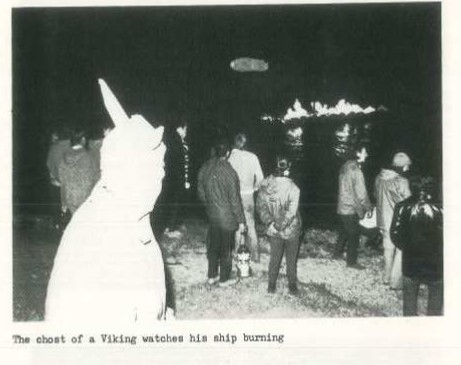The First Camp
The man responsible for the university’s long running connection with Coniston is Max Madders, who lectured at Birmingham for the Physical Education course in the 1940s.
In the 1930s, he went on a camping trip in Coniston, recalling that in those days, campers would sleep under “household quilts rather than in sleeping bags” and pay sixpence per person to the farmer who owned the land.
He then suggested the site when, in 1947, the PE department considered making outdoor activities part of the recreation scheme for their first year students. 
During the first camp, the staff and students camped for 10 days. Only 1 or 2 staff owned cars and the majority of students hitchhiked up for the camp. As there was no motorway, the journey generally took 7 or 8 hours. All the equipment was sent up by rail and the farmer would help unload it all and tow it with his tractor to the site.
In 1948, the camp was held down south to allow the students to attend the 1948 Olympics in London.
In 1949, the department decided that these camps should become part of the instruction for the PE students. They therefore purchased more equipment to allow for larger groups, and hired 2 marquees from Liverpool to serve as a lecture theatre and kitchen, which were also sent up by rail.
The camps took 3-4 days to set up, and the priority was the large marquee which provided the only shelter during the building period – which, considering the changeable nature of weather in England was often a problem!
Groceries were landed from the boat house, or brought down from the farm house by wheelbarrow. Eventually the department purchased a vehicle which made securing provisions much easier.
Family Camps
Family camps for University of Birmingham staff first began at the site in 1970, and continue to this day.
From 1956, students of the university would camp for 2 weeks, and the following 2 weeks, ex-students of the university would bring school groups to camp. In 1970, these school camps ended and were replaced by family camps.
In those days, camping was limited to 42 consecutive days on unlicensed sites, hence the organisation of the school camps immediately after.
Max Madders recalls that family camps had a full programme of fell-walking, canoeing, climbing, and sailing, with older students acting as instructors. Up to 80 people could attend, with some bringing pets such as hamsters and white mice.
In 1953, permanent storage was built on the site to allow for some of the equipment to be kept there, with the land being leased from the farmer. The hut stood for more than 25 years and provided both storage and shelter in pouring rain when the tents could not withstand it.
The hut also allowed for more permanent equipment to be utilised – Max recalls that enough money was donated for 4 dinghies to be built. They were named "Trial, Error, Endeavour, and Success, in the order of building".
If you are interested in finding out more about family camps, please email the RPC team at rpcconiston@contacts.bham.ac.uk
The Viking Feast
In 1972, it was proposed that a Viking Feast be held to celebrate 25 years of camping at the site.
A committee was formed who wished the feast to be as Viking-esque as possible. They initially proposed that it should last for 7 days and nights, have venison, plenty of mead, and a Viking ship which was to be set on fire
 Max Madders stated in 'The Coniston Saga' that "We found that our resolve was not as strong as that of the Vikings was reputed to be". and thus the feast took place on 1st and 2nd July 1972, with 80 guests. The 10 gallons of mead had been fermented in the university’s Biochemistry department especially for the occasion. A Viking Ship was set alight to mark the occasion, although unfortunately it started to drift towards a forest. Max recalls that the copious amounts of mead and venison made it very difficult for attendees to tether and tow the burning ship. The village guests set off at 4am by boat, approximately 180 degrees in the wrong direction. Max recorded that 2 days passed before enquiries were made about their safe return.
Max Madders stated in 'The Coniston Saga' that "We found that our resolve was not as strong as that of the Vikings was reputed to be". and thus the feast took place on 1st and 2nd July 1972, with 80 guests. The 10 gallons of mead had been fermented in the university’s Biochemistry department especially for the occasion. A Viking Ship was set alight to mark the occasion, although unfortunately it started to drift towards a forest. Max recalls that the copious amounts of mead and venison made it very difficult for attendees to tether and tow the burning ship. The village guests set off at 4am by boat, approximately 180 degrees in the wrong direction. Max recorded that 2 days passed before enquiries were made about their safe return.